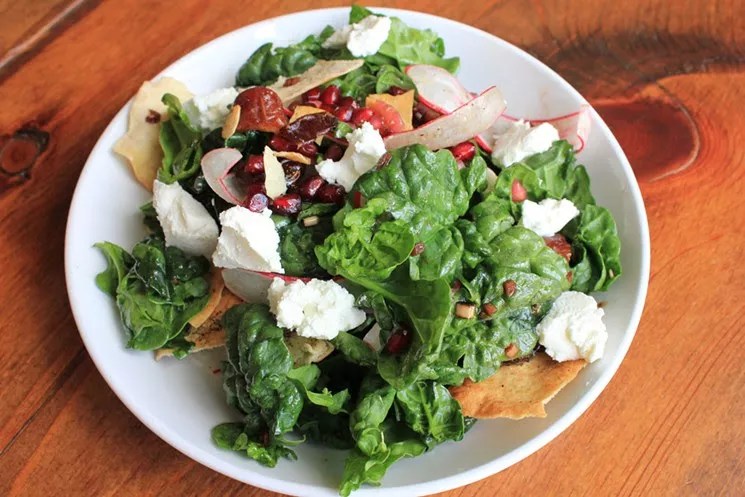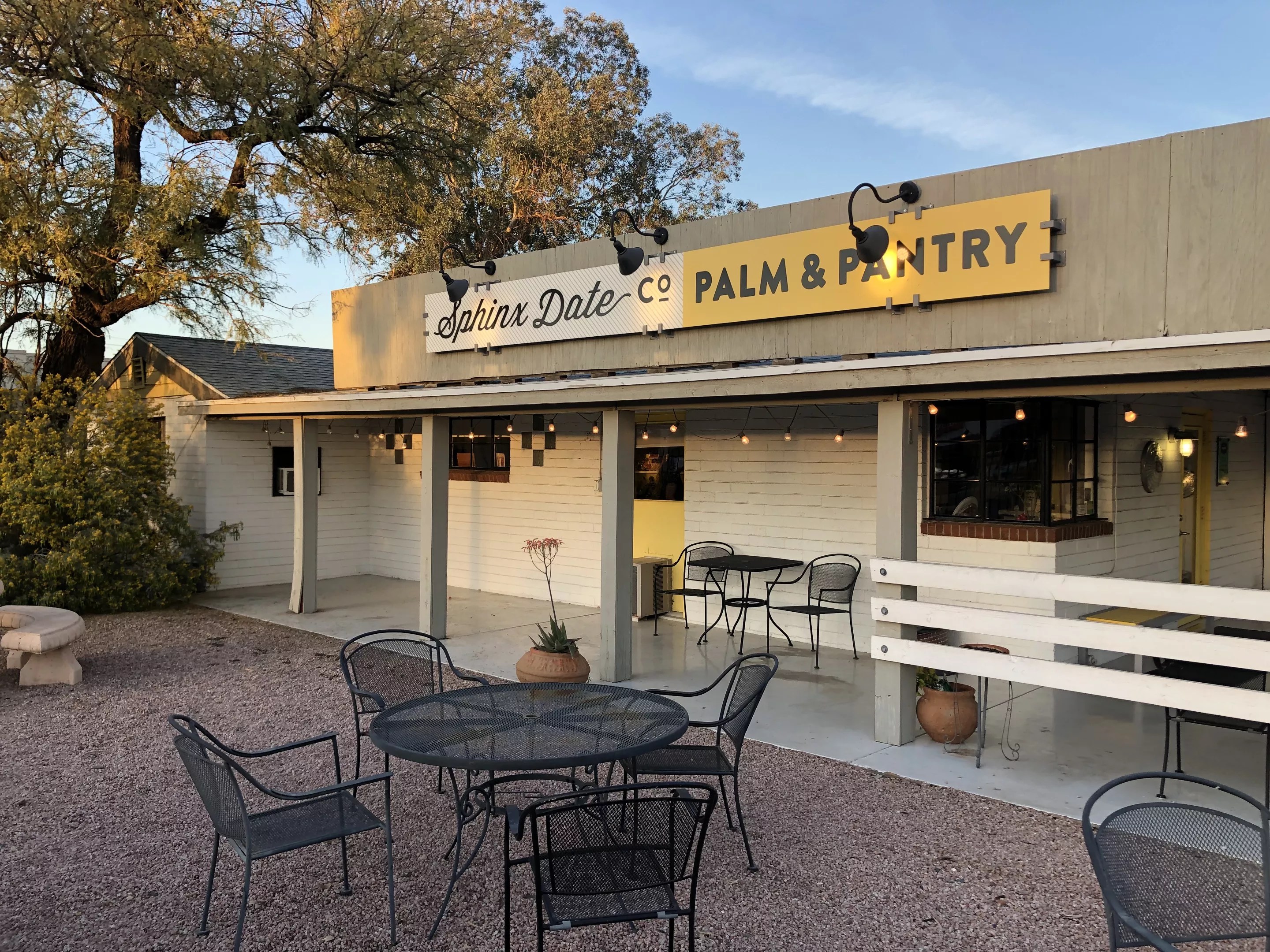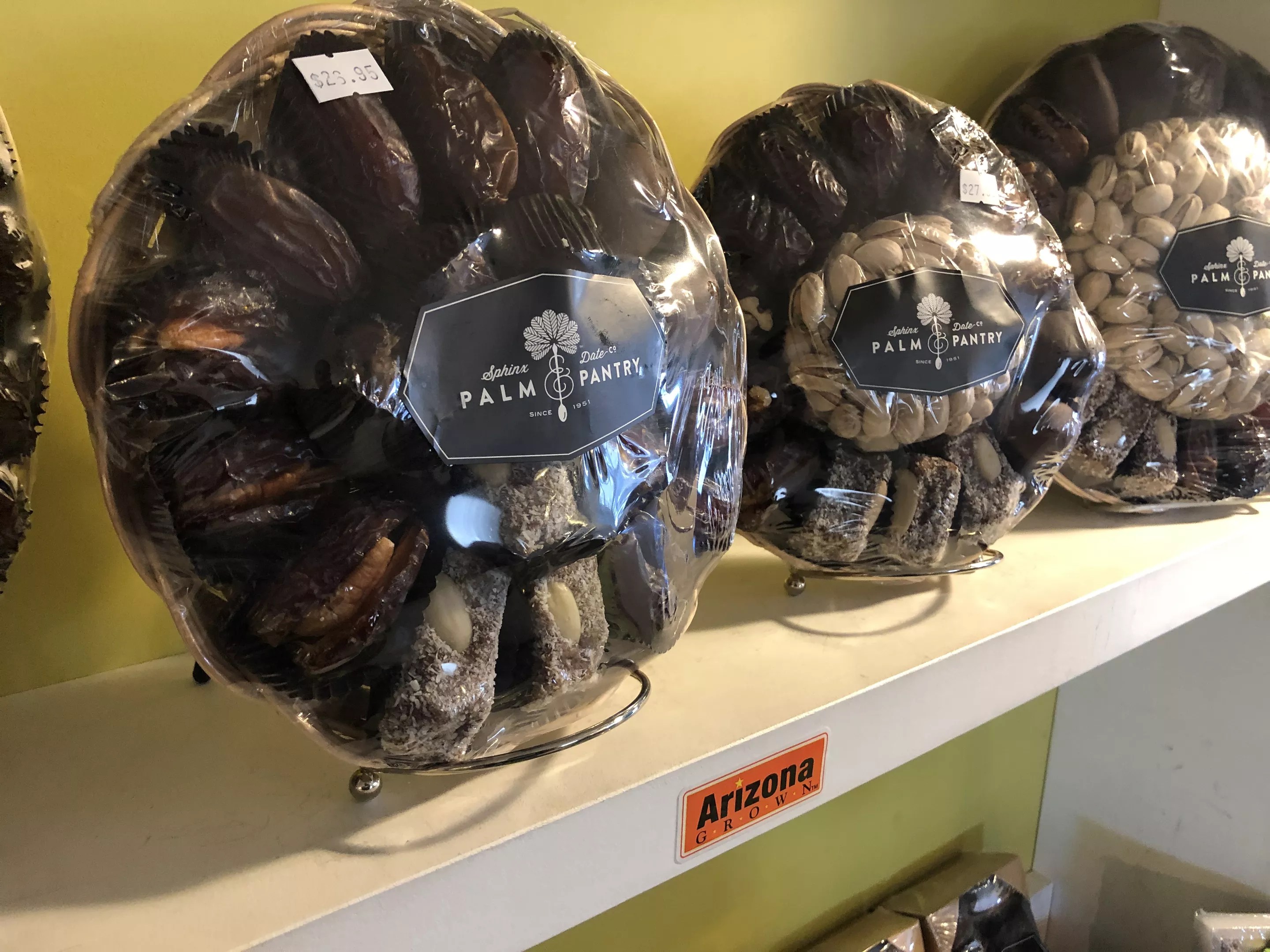
Chris Malloy

Audio By Carbonatix
Welcome to Sonoran Arcana, a column seeking to probe the margins of Arizona cuisine and define a more specific, novel cuisine that has emerged in America’s great Sonoran Desert: New Arizonan. Here, we will venture into the arid wilds and culinary unknown to spotlight the chefs and foragers, the millers and brewers, the miso masters and palo verde pod-pickers who are pioneering New Arizonan cuisine, or simply rocking out the food of Arizona. So throw open the doors to your mind and enjoy.
Date palms, the tall shaggy trees that produce dates, grow in just a handful of places in the world. They require an arid climate and minimal humidity, but some water – not too much, perhaps wicked from the soil of a river valley. In the U.S., dates grow only in southern California and Arizona’s Sonoran Desert.
Coincidentally, fatefully, the genus of the date palm is Phoenix.
Once upon a time, Arizona was a major date state. It began when date palms were brought to the Americas by Spanish missionaries in the early days of colonization. Near the start of the 20th century, these trees and their descendants were no longer producing in large quantities, so, beginning in the 1890s, the U.S. Department of Agriculture started to import dates from places like Morocco, cherry-picking favorites from the world’s 3,000 varieties.
By the 1930s and 1940s, date farms were a common sight in the Valley. Vacationers even stayed on date ranches that had inns, finding, in dates, the exotic. Due to rising property costs and the nuances of monsoon season, it all steadily moved down to Yuma.
Today, Yuma produces 10 million pounds of dates a year. The industry creates hundreds of jobs (as the date farming process can’t be automated) and accounts for some $30 to $35 million in yearly business.
As the tide of syrupy, brown-meated fruit has shifted to the southwest corner of the state, vestiges of date culture have shown in the Valley. The Phoenix date world is pleasantly strange, something that lives on the margins though its sweet fruit turns up in dishes at the center, giving Arizona cuisine gentle shape. You can find obscure dates grown in Arizona that you can’t find anywhere else in the country.

A Bloomsdale spinach salad with Black Sphinx dates made by Charleen Badman of FnB.
Chris Malloy
In short, the offbeat varietals, boutique date farms, terroir of the desert, and local-driven chefs make the date a crop about as Arizonan as cotton or citrus.
Charleen Badman of FnB is a big fan of dates, like Black Sphinx dates. She has used the Black Sphinx in preparations like a salad of Bloomsdale spinach, goat cheese, pita chips, and radishes sliced so thin they’re virtually 2-D. In this salad, she left the dates in nickel-size chunks. “That way, they’re really showcased,” she says.
She adds: “I mean, to take a date like this and put in a cake…”
Charleen is a chef who exalts the fruits and vegetables of Arizona, and knows which should be entombed in a cake, which spotlighted as a dish’s centerpiece. Black Sphinx is the latter.
The Black Sphinx date was discovered by Roy Franklin in Arcadia in 1928. Franklin found an unusual seedling growing in somebody’s front yard, confirmed that this was a new hybrid, and encouraged Arcadia residents to grow what became known as the Black Sphinx, called “sphinx” for its misty origins. The date is sweet, papery, and doesn’t keep as well as the meaty Medjool, the primary date varietal seen in supermarkets across the country.
Today, Black Sphinx dates still grow in Arcadia backyards. Some residents sell to restaurants. You can find them fresh come early fall’s date season at, for one, Sphinx Date Ranch in Scottsdale. Here, Rebecca and Sharyn Seitz carry on the specialty date business launched by Franklin and his associates before World War II.
Another place Charleen finds rare dates is at Community Exchange, an eclectic vendor at the Uptown Phoenix Farmers’ Market. This stand utilizes some three dozen hobbyist gardeners and backyard growers, larding tables with gemlike produce that isn’t commercially viable for full-time farmers to cultivate. Some outlandish varieties have made their way to the ever-changing table, including a blueberry-looking orb that its vendor called a “Fan Palm Date” and sold whole and as syrup.
Charleen also gets dates from her brother.

Sphinx Date Ranch in Scottsdale.
Chris Malloy
James Badman is associate director of animal care at Arizona State University. He is also one of the Valley’s boutique date growers, the hobbyist operator of one of the better-known but still esoteric groves. James grows 24 varieties. He sells them to Sphinx Date Ranch or gives them to his sister. This time of year, late March, he’s pollinating his yearly crop.
“It’s nice that they’re coming back into fashion,” he says. “They don’t take as much water as some of the citrus. It’s going to be a huge crop for Arizona.”
One of the few specialty groves substantially bigger than James’ is the ASU grove. This grove, actually split into a Tempe grove and a Mesa grove, has some 400 date palms and more than 50 varieties: both Old World (like Halawi) and New World hybrids (like Black Sphinx or Honey). Students help in the groves, which provide fruit for purchase on ASU grounds.
The ASU groves continue the east Valley’s long history with dates. “Tempe was the first city back in 1890 to receive date shipments from the USDA,” notes Deborah Thirkhill, who superintends ASU’s date palms.
One of Thirkhill’s favorite varietals that flourishes in her groves is the Barhi. The Barhi is popular in the Middle East – where dates have been grown for 6,000 years, where date wine has been used in rituals – a fact that, by extension, also makes the Barhi date popular in metro Phoenix. “We have a big Muslim population,” Thirkhill explains. “They drive the Barhi and use it to break the fast during Ramadan.”
The Barhi is so popular that she has to curb sales to a half-pound at a time.

Fresh packaged medjools.
Chris Malloy
In later stages of ripeness, the Barhi is soft. Dates pass through many stages of ripeness, often starting in vivid yellow and red hues, and then finishing to a maple-brown as they dry on the branch, some topping 50 percent sugar as their water is wicked away into the atmosphere. Thirkhill notes that Barhi dates are often eaten at an early stage of ripeness, before they get to soften, when they’re still “crunchy like a green apple.”
Depending on where you live, you might have an offbeat date varietal like the Barhi growing in your backyard. Arcadia has pockets of Black Sphinx palms, and other parts of the Valley shelter fragments of the date-centric past.
“In 2011, I bought a property and didn’t know what dates were,” says Janna Anderson, owner of Pinnacle Farms, just west of South Mountain. “Now I’m a date farmer and have more Maktooms than anyone in the state.”
Luckily, Anderson’s new farm happened to have Maktoom date palms. Maktooms are an Iraqi varietal with an interior ruddiness under gnarled dark-chocolate skin, looking lighted from within by a dim red bulb. She started with six palms. Now she has about 20.
This year, most of her Maktoom crop went to Cassie Shortino, chef at Tratto.
Shortino uses them with pork. “The dates are really sugary,” she says. “What we did is cook them in sherry vinegar and sugar, and make a kind of syrup. We use that to glaze pork chops.”
The sugar coats the pork well, she says. It allows the meat to caramelize nicely. It also fits the restaurant’s paradigm: Arizona terroir plugged into an Old World blueprint. Just like the tale of dates in the Sonoran.